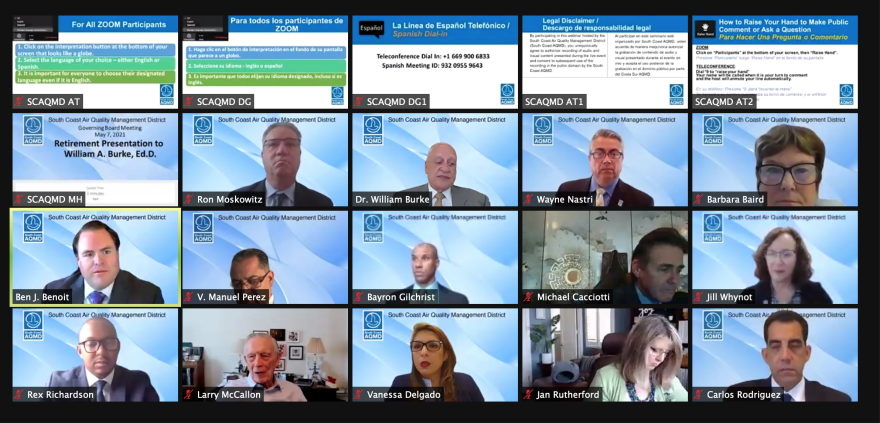Southern California air regulators delivered a major win last week in the fight to improve the region’s toxic air quality. KVCR’s Megan Jamerson reports they voted to hold warehouses accountable for the diesel truck pollution they attract with a rule that’s the first of its kind in the nation.
During over three hours of public comment, the South Coast Air Quality Management District heard a clear message of overwhelming support from Inland Empire locals like her said Andrea Vidaurre of the People’s Collective for Environmental Justice.
“Everybody here knows somebody with asthma," said Vidaurre. "Everybody here has family here working at the front lines of pollution making it possible for the world to run. We can’t live in a world that jeopardizes peoples health anymore.”
At the heart of the debate was the balance between improving public health impacts in low income and communities of color most affected by pollution from diesel trucks that move goods versus the costs to business to comply with the program. Concerns about job losses and the lack of available zero emissions truck models were also raised during public comment.
The rule passed with a 9 to 4 vote. It will require both new and existing large warehouses to meet emissions reductions goals each year through a point system. They can do things like add solar or use near-zero or zero-emissions trucks to gain points and avoid penalties.
A district report estimates the rule could result in the public health savings benefits of $2.7 billion and reduce ozone emissions by 15 percent by 2031.






